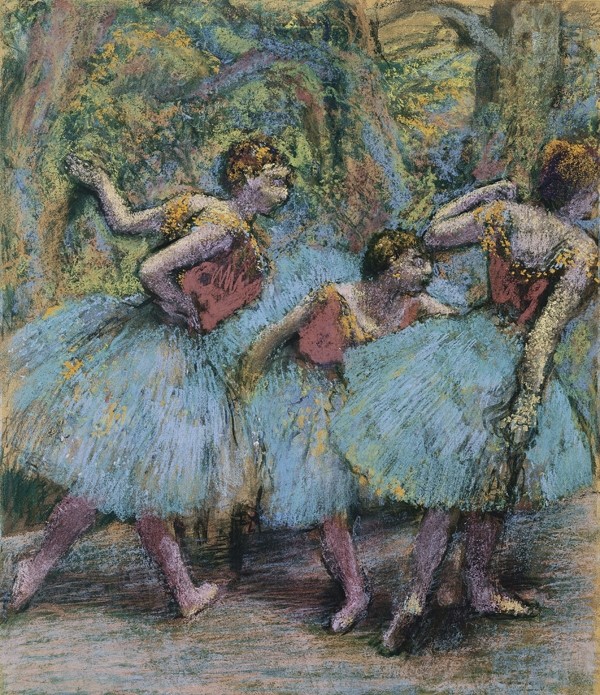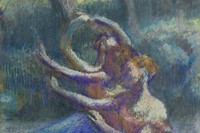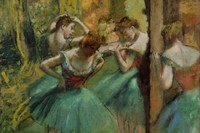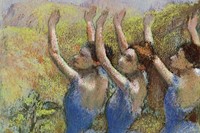The sinuous stretches and innocent twirls of young ballerinas at school have the habit of dancing across the mind’s eye at the mention of Degas. Their delightful poise and fresh beauty – on canvas or in bronze – is refreshingly light, at least until
The sinuous stretches and innocent twirls of young ballerinas at school have the habit of dancing across the mind’s eye at the mention of Edgar Degas. Their delightful poise and fresh beauty – on canvas or in bronze – is refreshingly light, at least until one considers the observing older male artist in the corner. But as it turns out, the third party studying the scene was in fact obsessively concerned with capturing the precise movement of the female form as it dances. Indeed, for Degas this fit into a larger project of depicting realist scenes of contemporary French life, and while he continues to be credited as one of the founders of Impressionism, his work crossed many stylistic boundaries, maintaining a running theme of unpredictability and fascinating introspection.
Born the son of a French banker and an American amateur opera singer, Degas was given a rigorous classical education from a young age, and developed an early artistic inclination by gaining permission to ‘copy’ at the Louvre in his spare time. Training his eye through the study of classical and Renaissance work, Degas challenged himself to capture the effects of light and scenes of urban leisure that was the prevalent style of the time.
"While he continues to be credited as one of the founders of Impressionism, Degas' work crossed many stylistic boundaries, maintaining a running theme of unpredictability and fascinating introspection."
And now the first exhibition exclusively devoted to Edgar Degas’ rich and complex later work has opened at the Fondation Beyeler in Basel, Switzerland. Though his work has received no lack of posthumous acclaim, most Degas exhibitions focus on his Impressionist phase or more specific aspects of his oeuvre. Instead the Fondation Beyeler is showing over 150 works representing the culmination of a rich career spanning six decades, where dancers and nudes, jockeys and racehorses spring about the space in their various incarnations. Experiments in painting, pastels, drawing, print and photography tally up to what is by far the largest number of mediums worked in by any artist of the period. In Degas’ late work, the fine, delicate painting of the Impressionist period gives way to a unique pleasure in the experimentation and obsession of creative desire. Clearly, bold precursor to modern art, Degas’ late work was a great artistic achievement with an identity entirely unto itself.
Edgar Degas is at the Fondation Beyeler in Basel until January 27.
Text by Monica Ainley



